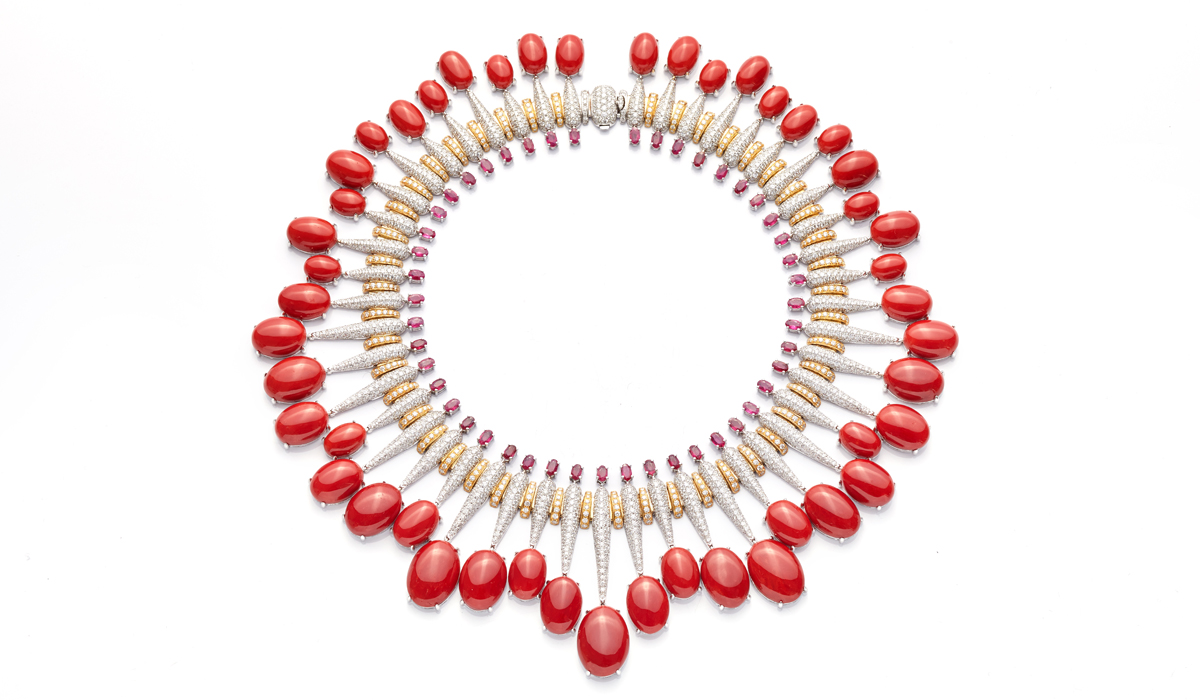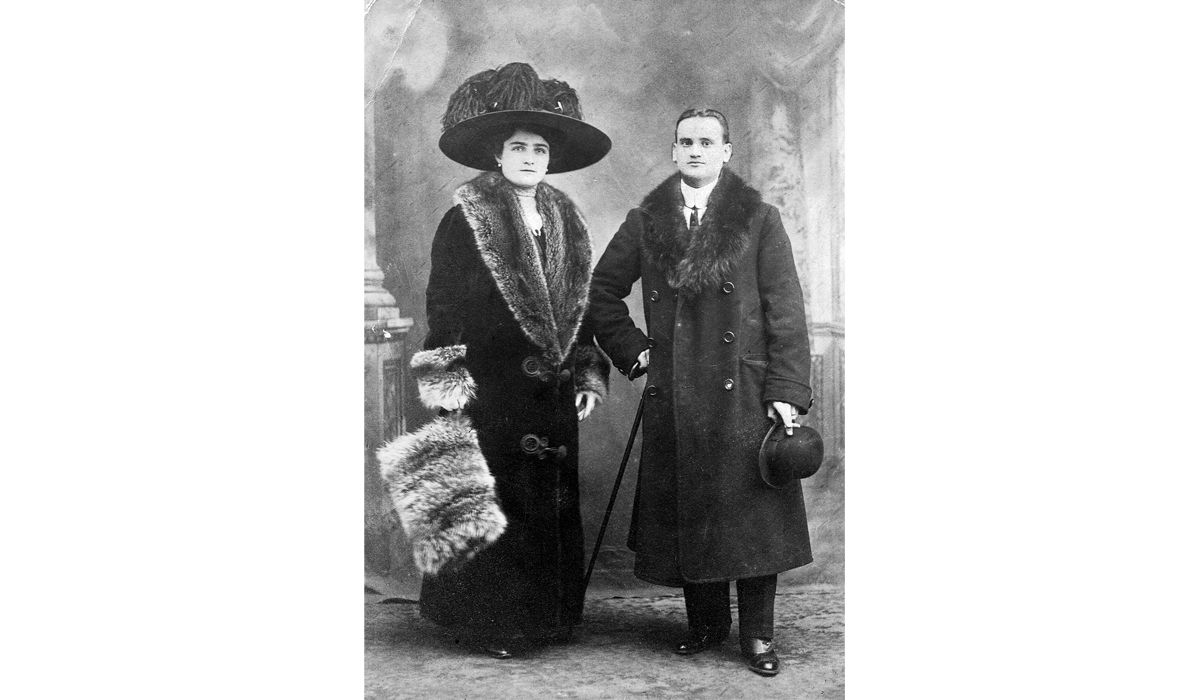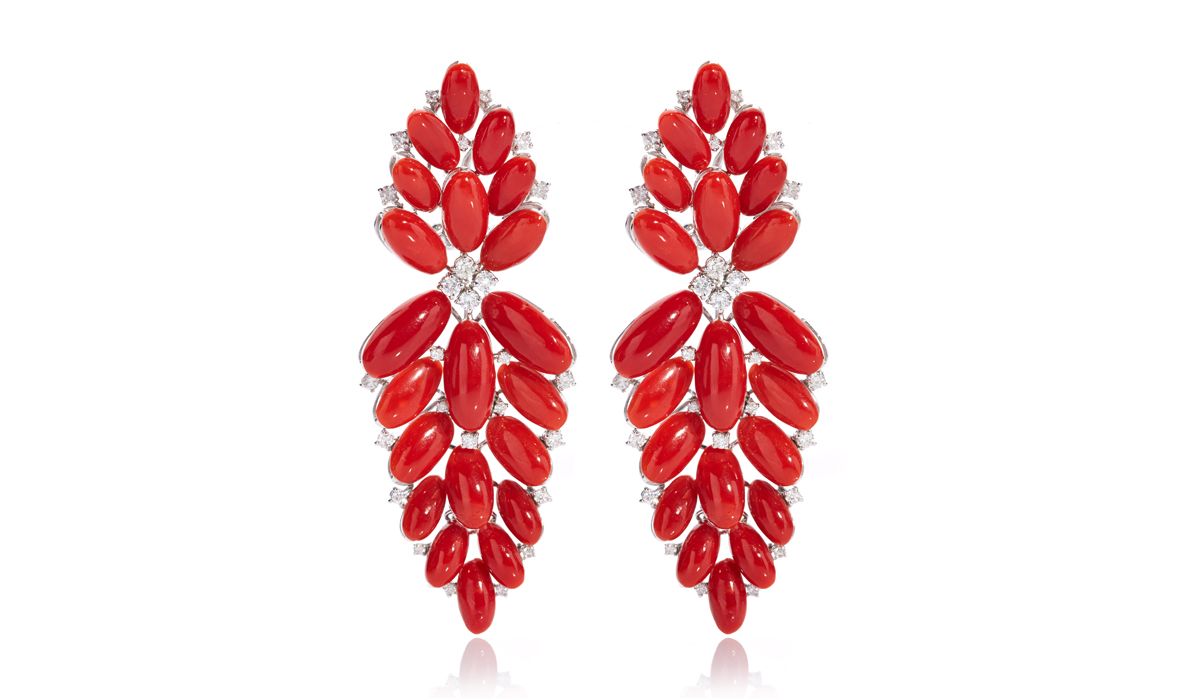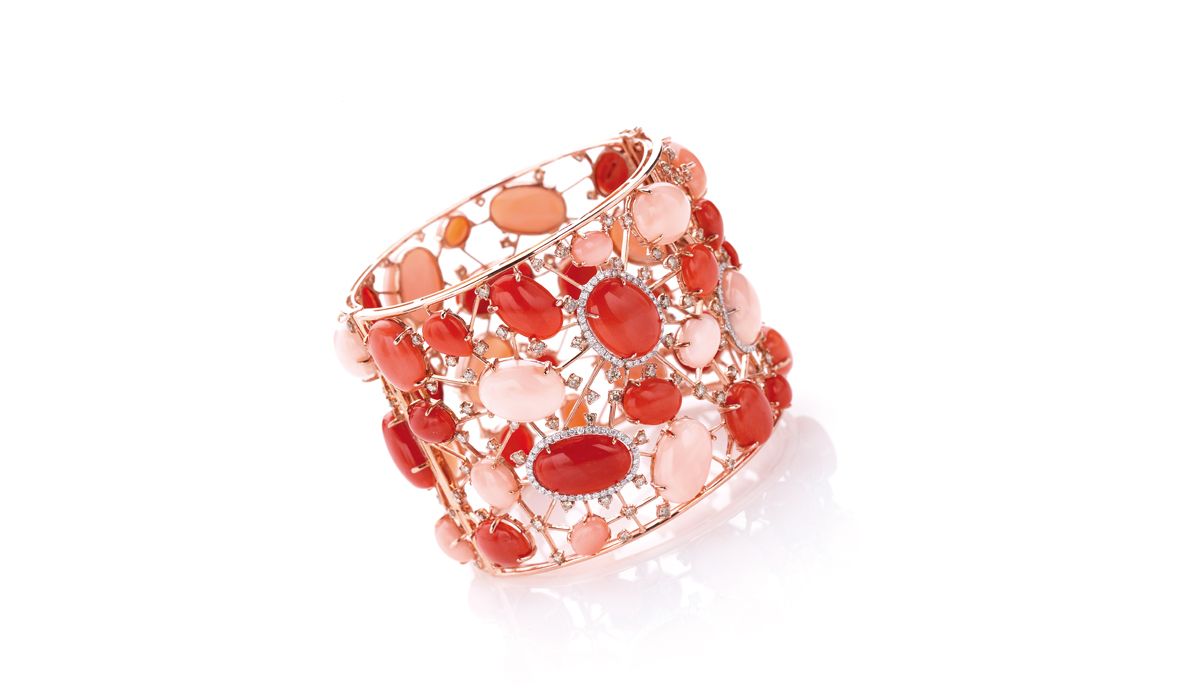The Story of Quality Coral Written by De Simone
A family history that, since 1855, has been inseparably intermingled with that of coral through an intense familiar language that speaks of perfect quality, reveals stories, anecdotes, curiosities. Michele De Simone tells us about it
«Our path has always been, and still is, linked to the family, starting from our ancestors, who began the business by trading in raw coral in Torre del Greco in the late 1800s. Nowadays, with about 150 years of activity behind us, I can say that carrying on a family business is, undoubtedly, an advantage for business development. We are artisans who are highly respected for product type and for our seriousness. Coral is not easy, in general. It has to be treated with great care, in the cuts, in the selection, in the quality. And what makes De Simone stand out is exactly selection and high range. We only began mounting coral with precious stones and making finished products for high jewelry a few decades ago. Up until then, we mainly produced a more economic product and lose corals, which, in the USA for example, we sold principally in Providence, California. From there, they found their way into the large department stores. In the 1920s, big jewelry companies, like Cartier, true forerunners in the use of coral in high jewelry, were supplied by us. And to think that, in the past, coral was only considered as a jewel for the people, with the classic necklace given to the wet nurse because it was thought to increase milk production. Today, however, coral is a fully-fledged part of the panorama of high jewelry. Our DNA can be found in the search for perfect quality, raw material selection, cut and how the coral is worked. Thinking about how to cut a branch makes the real difference. It can increase or decrease the value». Michele De Simone’s story, which he told during a meeting at JCK in Las Vegas, is a fascinating one that unravels through an important family history in terms of the brand’s success and development. «Up until the beginning of the 1900s, the only type of coral known was Mediterranean Rubrum. A red coral with no blemishes, whose small raw branches grow to 10/11 millimeters at the most. Japanese coral, on the other hand, with very large branches that start from 11 millimeters and with various white marks, arrived in Europe later, thanks to my family. In fact, in the early 1900s, news came that large-sized corals had been found in Kyoto. My uncle and grandfather understood the enormous potential of that coral and left immediately for Japan (it was 1910) with the Trans-Siberian train, via Vladivostock, in order to buy these large branches. And they were right because the traffic started in those very years». When we speak of Japanese coral, it is well to know that the most precious, pink angel-skin coral, together with orange, white and the deep red, called “Japanese black”, another highly prestigious coral, can also be found in these seas. But be careful, black coral doesn’t mean black in color. In general, all corals can be precious depending on their quality, flawlessness and the accuracy of the cut. «To give an example of quality, we made a very important and perfect necklace with 250 gr of red Mediterranean coral. The branch was 10 millimeters and it had about 15 beads made from branches of 16/17 millimeters. It took us 20 years to make this necklace, selecting the purest coral the market could offer and we achieved exceptionally high levels with this piece. Ours is a company that favors unique and unrepeatable items because we have chosen quality as our niche market, up to the point of becoming fanatical».
With trade relations from East to West, Europe, with Italy first and foremost, is De Simone’s pride, thanks to an increasingly more important Made in Italy giving value to jewelry, to the jeweler’s selection, to the taste and charm of Italian women. «We have been lucky in America because the appeal of Made in Italy products is still strong and coral jewelry is an exclusive, 100% Made in Italy product. The East in general, and China in particular, is one of the largest consumers of coral in the world because, not only is it a fashion product, it is also, and above all, a lucky charm. In China, red is synonymous of vitality and it is one of our main markets. What they buy, however, depends on the territories. Mongolia, for example, wants different cuts and prefers red, barrel-shaped beads, while in China, the round bead, always in Mediterranean red, is the most highly requested with a trend in continual growth for the last 15 years. It is a much-sought after product among all generations because it is niche, valuable and on the wish-list of young people in particular, not only Chinese. How much do they spend? A lot, if they can. They have very high spending power and can range from an extremely expensive necklace to more economic strands. The type of product that we take to that market is very wide. From lose strands to those already assembled, and this is why we work with two divisions in China: one department for lose items and another for the product that goes directly to the jewelry store». One of the most significant episodes that left a mark on the De Simone family history is linked to the Second World War, following the bombing of their offices in London. «With the allies in Naples, our premises were full of unsold goods. We had to come up with something to get the business going again and get rid of pieces that hadn’t moved due to years of war. This is how the so-called "cascettari" came about, that is, travelling mediators who filled wooden boxes with jewelry that they carried over their shoulders to sell to the American allies, who bought them to take back to their wives overseas. The items were made of low qulity, 14-carat gold or even metal, and were mainly souvenirs. The cameo was one of the bestsellers. Our stocks were enormous but with this system, which my grandfather promoted, business recovered. Nowadays, we have added design items to high jewelry (in the ‘20s, De Simone also produced items in tortoise-shell), collaborating closely with architects, interior designers and authoritative publications, such as Wallpaper. From board games to candelabras with very large, red Japanese coral branches, made to request». And while the diamond owes its public success to a language which is now of public domain, coral can also boast and revendicate its own niche and exclusive world. «Coral is not for everyone» Michele De Simone concluded. «It is for true experts. You don’t buy it off the cuff, you have to get there gradually, and its economic value can be even greater than diamonds. There are a lot of ten carat diamonds in the world. But not coral. A few unique pieces, whose value is given by the quality, selection and size. And, to conclude our return to Las Vegas after years of absence, I can say that the aim of our attendance here today is to get even closer to a territory that is on the up and up. We haven’t been here for almost 20 years, even though we have always had excellent relations with the USA thanks to our participation at other international trade shows. But the geography has changed a lot in America too and now we are exploring, even if New York, California and Florida are undoubtedly the most important catchment basins for us, with highly loyal customers. My favorite piece? The My Lady necklace, complicated and time-consuming to make due to having to find deep red Mediterranean cabochons of exceptional rarity and size».





